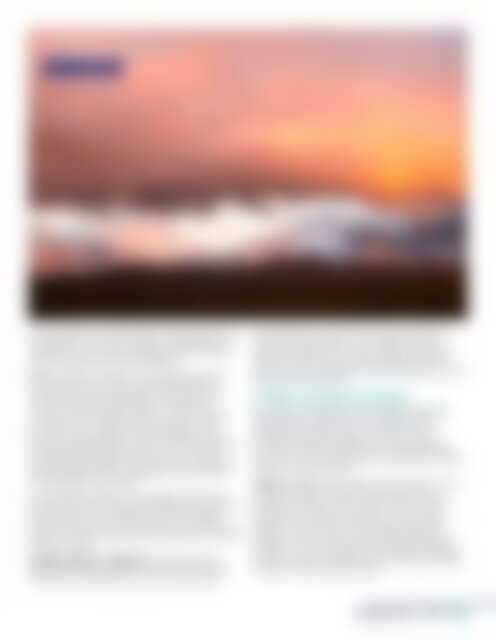NZPhotographer Issue 23, September 2019
As of December 2022, NZPhotographer magazine is only available when you purchase an annual or monthly subscription via the NZP website. Find out more: www.nzphotographer.nz
As of December 2022, NZPhotographer magazine is only available when you purchase an annual or monthly subscription via the NZP website. Find out more: www.nzphotographer.nz
Create successful ePaper yourself
Turn your PDF publications into a flip-book with our unique Google optimized e-Paper software.
SUNSET OVER MT NGAURUHOE<br />
F11, 1/6s, ISO 64<br />
than enough for everything they would ever use it for,<br />
including A3+ prints. The number of megapixels your<br />
camera has, only impacts sharpness if you intend to<br />
make huge prints of your photographs.<br />
Lens – I think lens quality is a more important factor<br />
to consider when it comes to image sharpness. A<br />
camera body only records light; it is the lens that<br />
controls the quality (sharpness) of this light and<br />
focuses it onto the sensor. There is no point owning<br />
a camera with a 45MP sensor and using a cheap<br />
lens that is only capable of 12MP sharpness, and<br />
some low-quality lenses would not even be capable<br />
of rendering this sharpness. Even the very best fullframe<br />
lenses available today are still not capable of<br />
resolving 45MP in terms of sharpness, but some do a<br />
much better job than others.<br />
The DXOMARK website is an excellent resource for<br />
lens tests and saves the work of testing them yourself.<br />
Coming back to my earlier point about the 40MP<br />
phone and why this is a bit of a joke, I doubt the tiny<br />
optics on its lens would be able to resolve much of this<br />
resolution sharply.<br />
Sharpest Aperture / Diffraction – All lenses have a<br />
sweet spot, and you need to test your lens or use a<br />
website like DXOMARK to find out this information.<br />
This will differ from lens to lens. As a go to for most<br />
full-frame camera lenses, your sharpest aperture<br />
will be around f8, with f11 only having very minimal<br />
diffraction. With each aperture narrower than this<br />
(e. g. f16, f22) you will lose noticeable sharpness in your<br />
image due to diffraction.<br />
CORRECT FOCUSING TECHNIQUES<br />
Focusing in the right place and obtaining enough<br />
depth of field to get both your foreground and<br />
background in sharp focus is critical for most<br />
landscape images. A slightly out of focus image<br />
on your camera will be extremely noticeable when<br />
viewed at 1:1 zoom later on your computer and even<br />
more in a large scale print.<br />
AF Point – People tend to rely on their camera’s Auto<br />
AF point selection mode. While using AF is not a<br />
problem we need to take control of the AF system<br />
and where it focuses; by using the Auto AF point<br />
selection, the camera would focus on the closest<br />
subject it can find, and this would likely leave the<br />
background out of focus. By manually selecting our<br />
AF point, we can still utilise the AF system but decide<br />
where we wish the camera to focus within the image<br />
to obtain the best depth of field.<br />
<strong>September</strong> <strong>2019</strong><br />
51


















